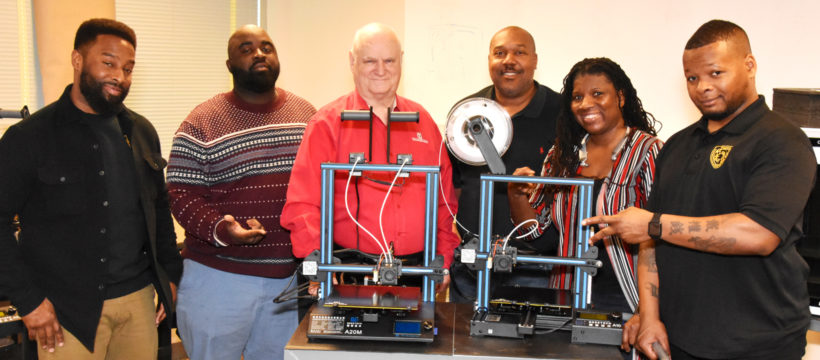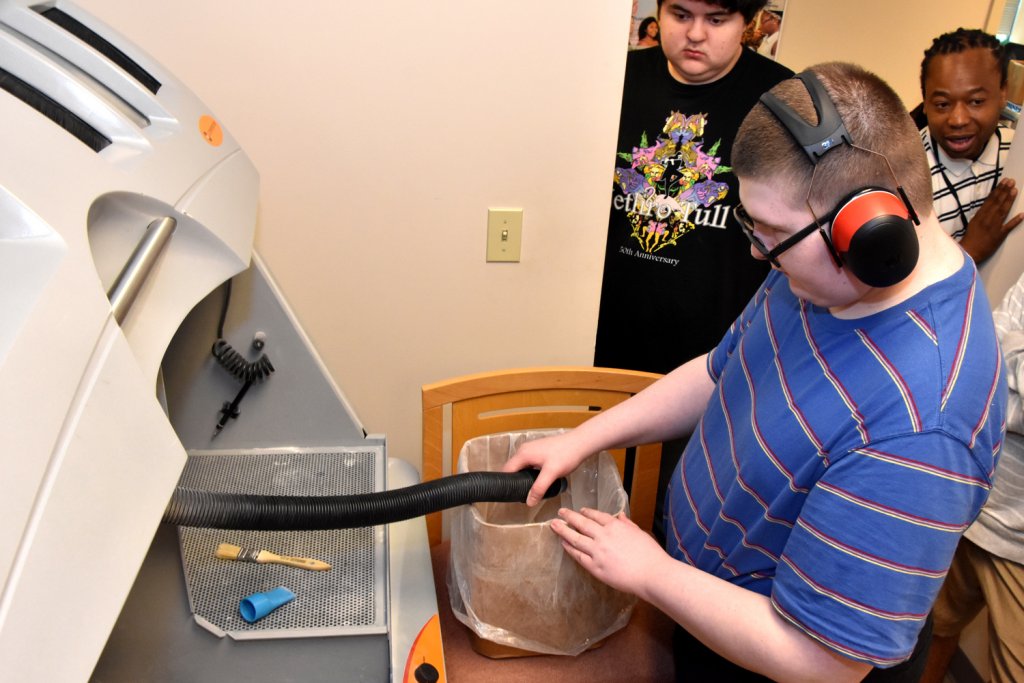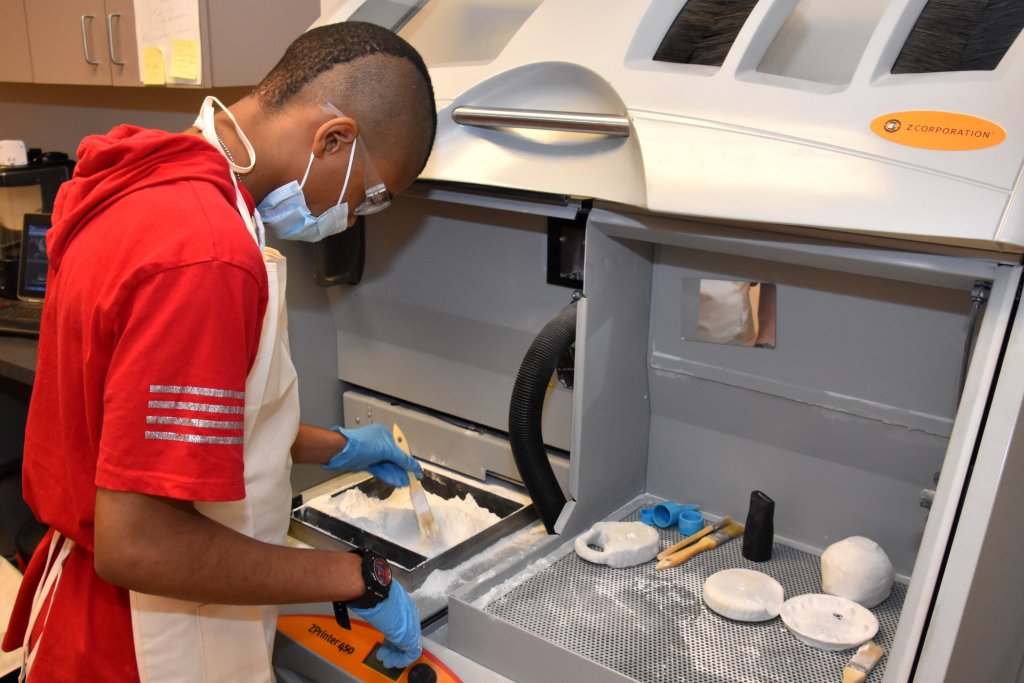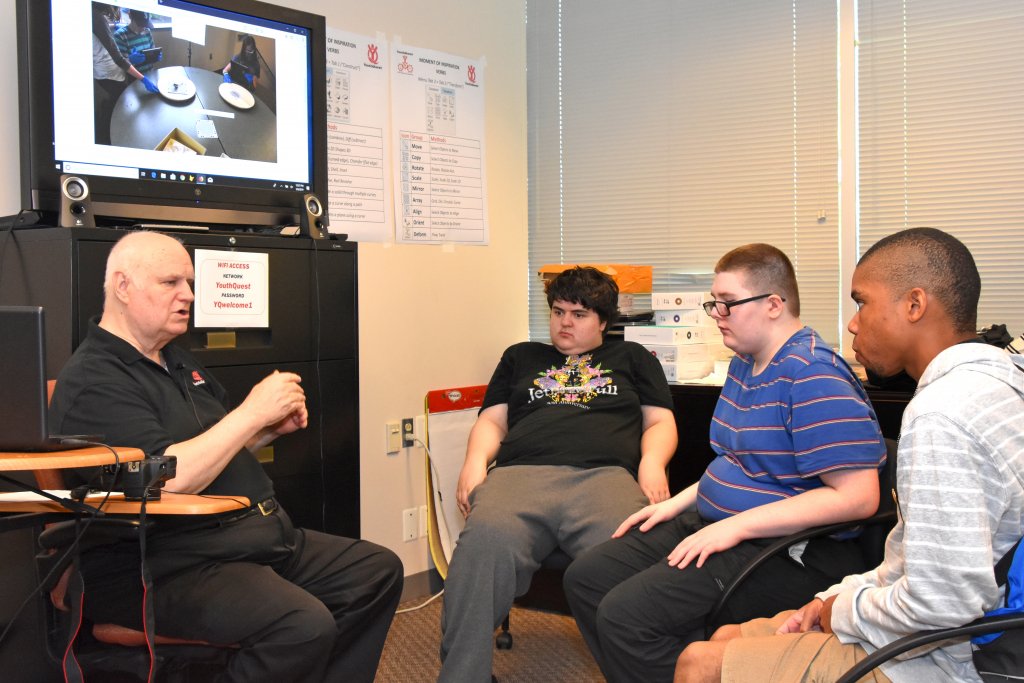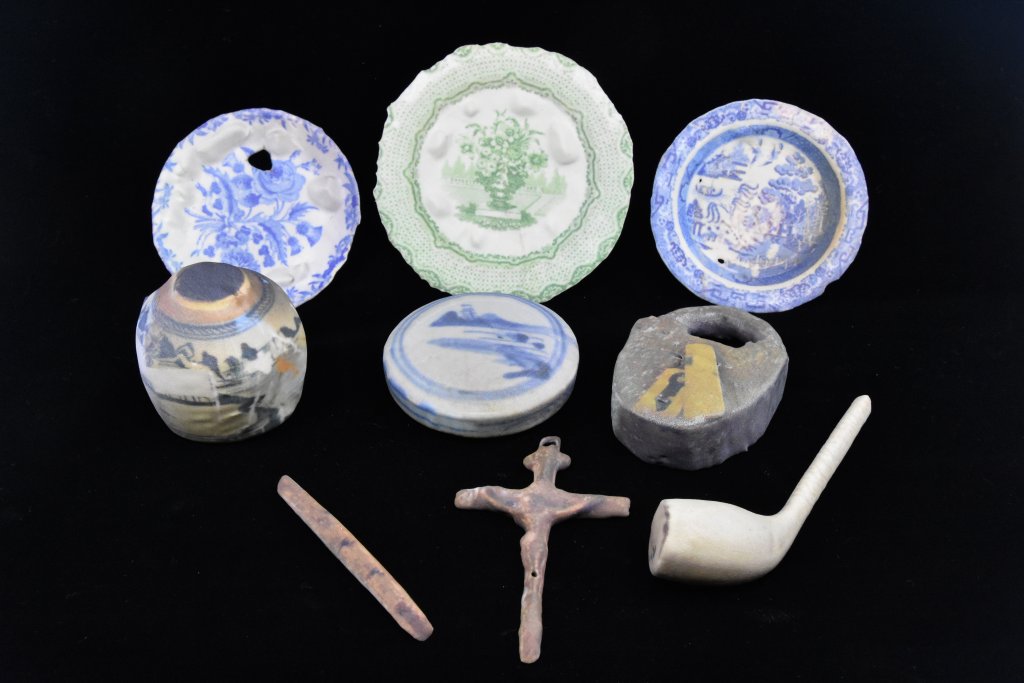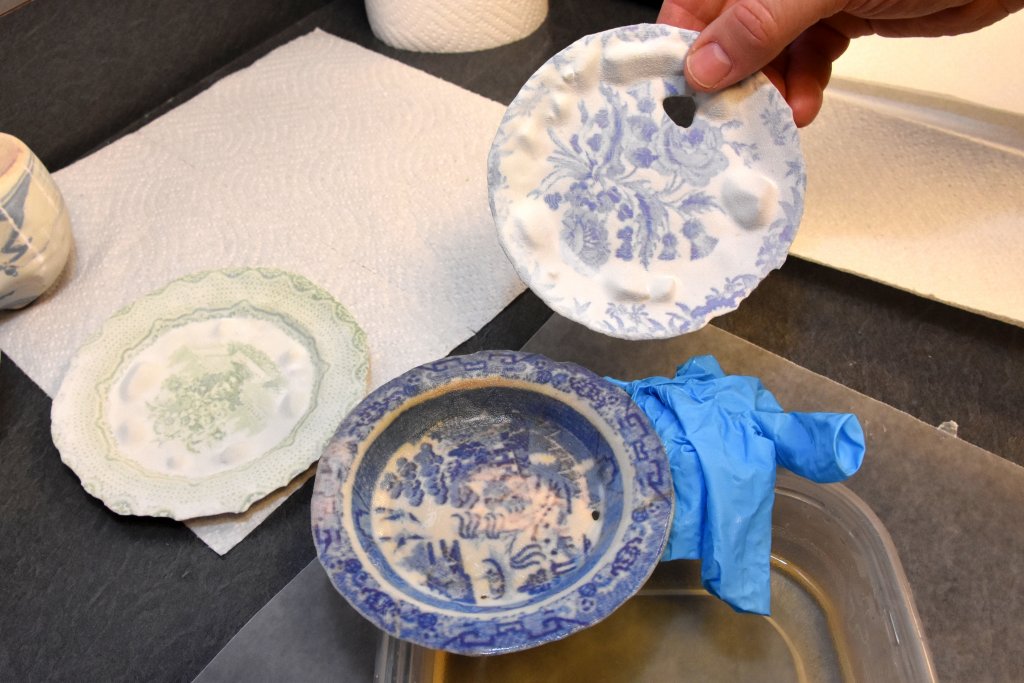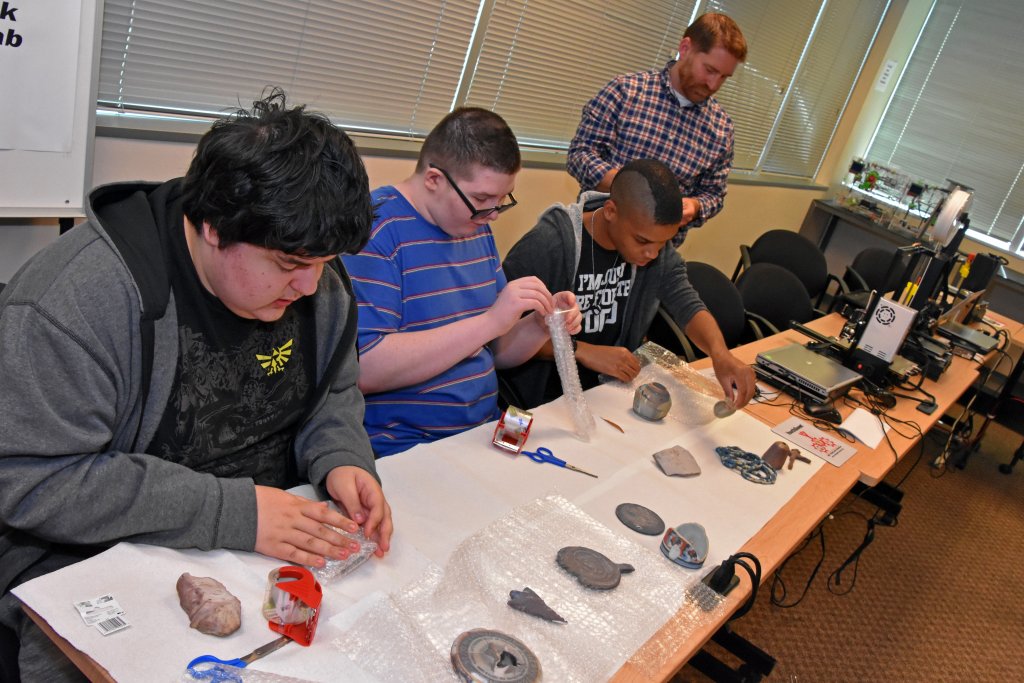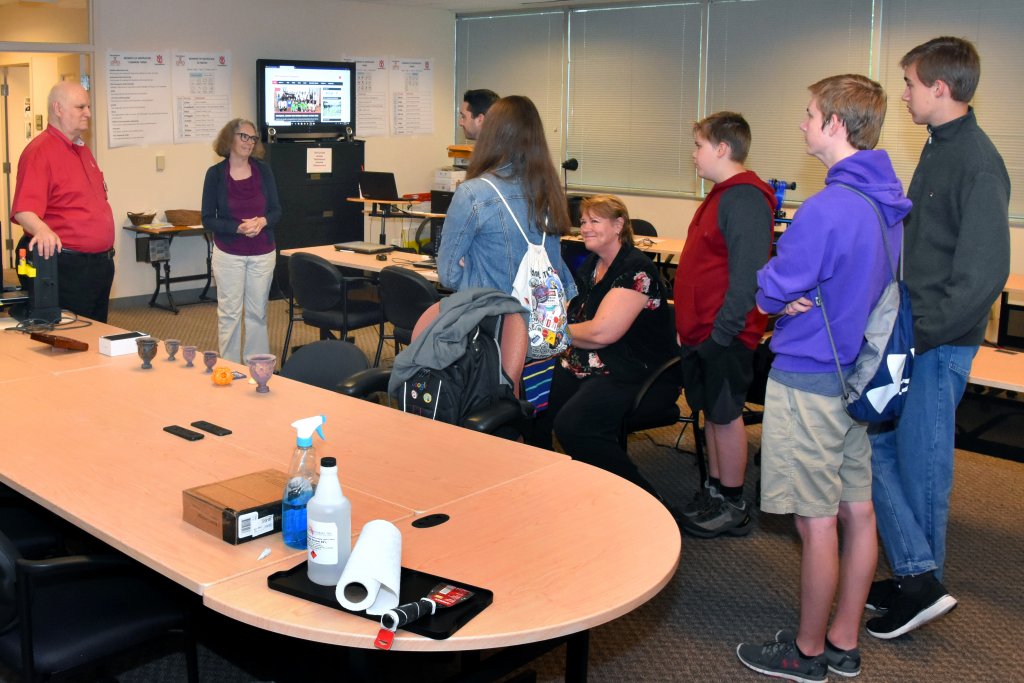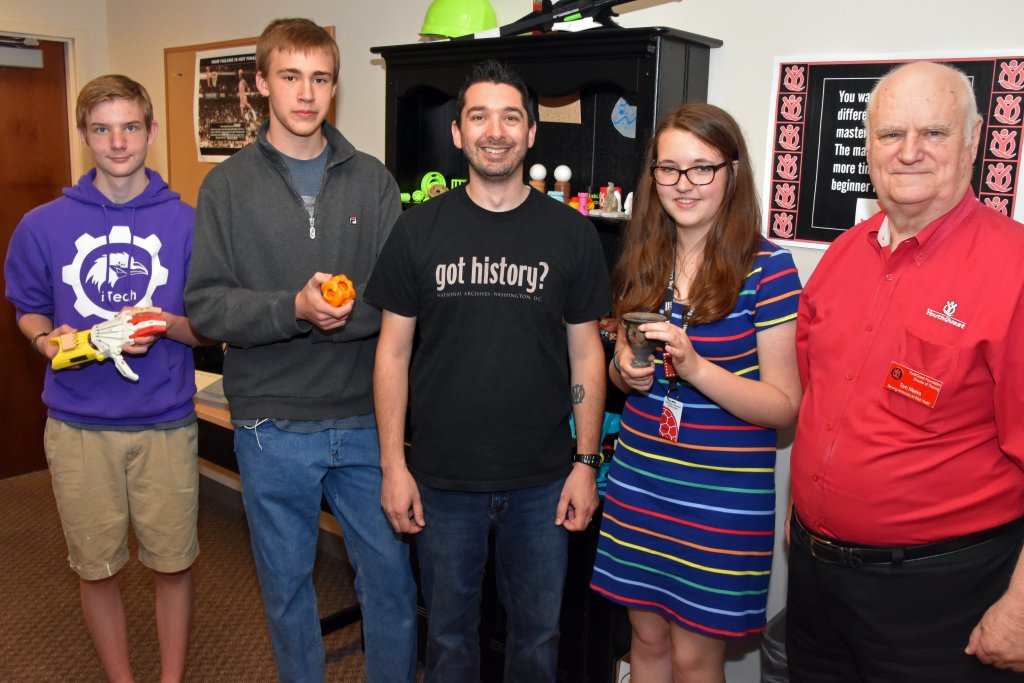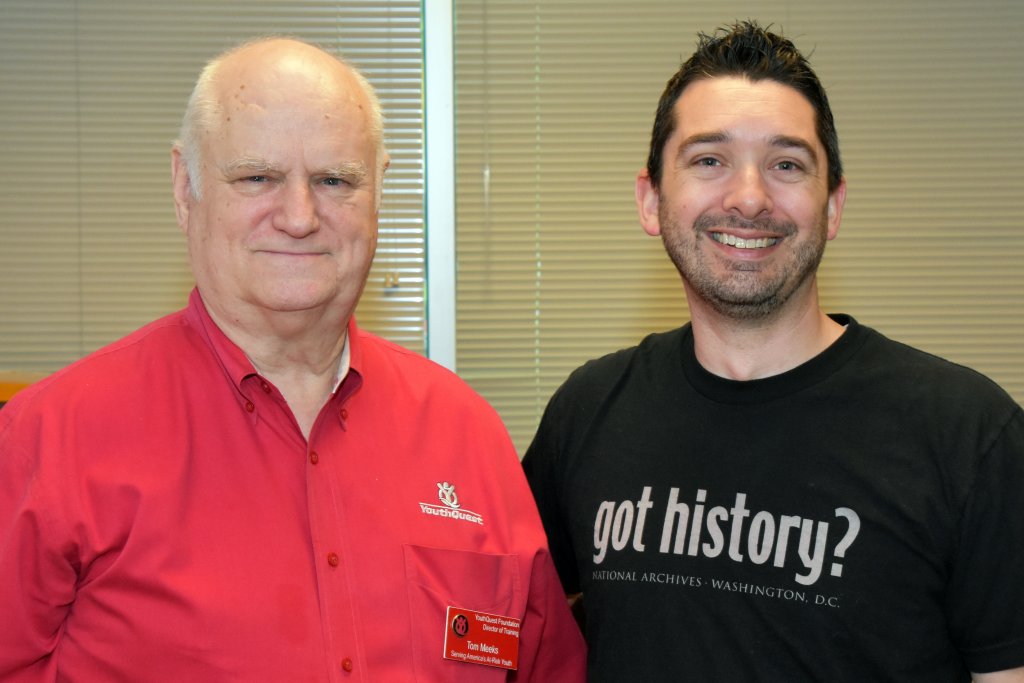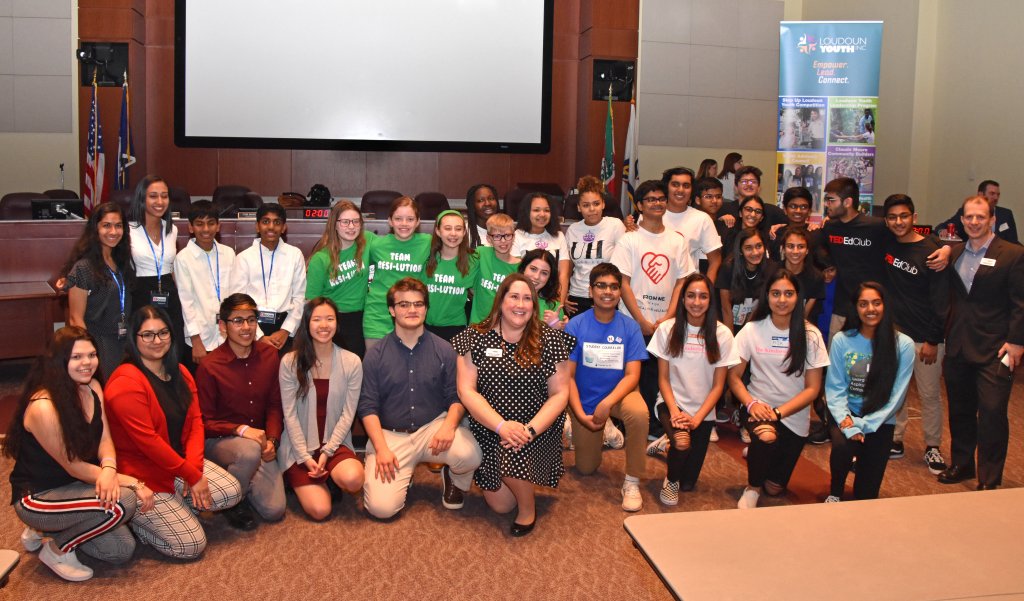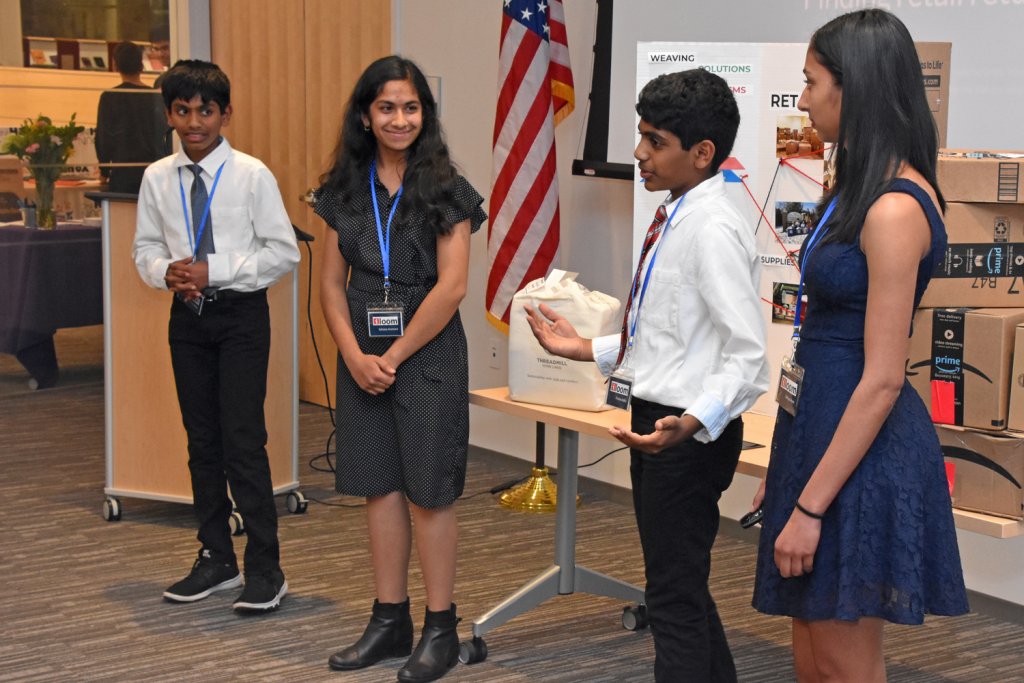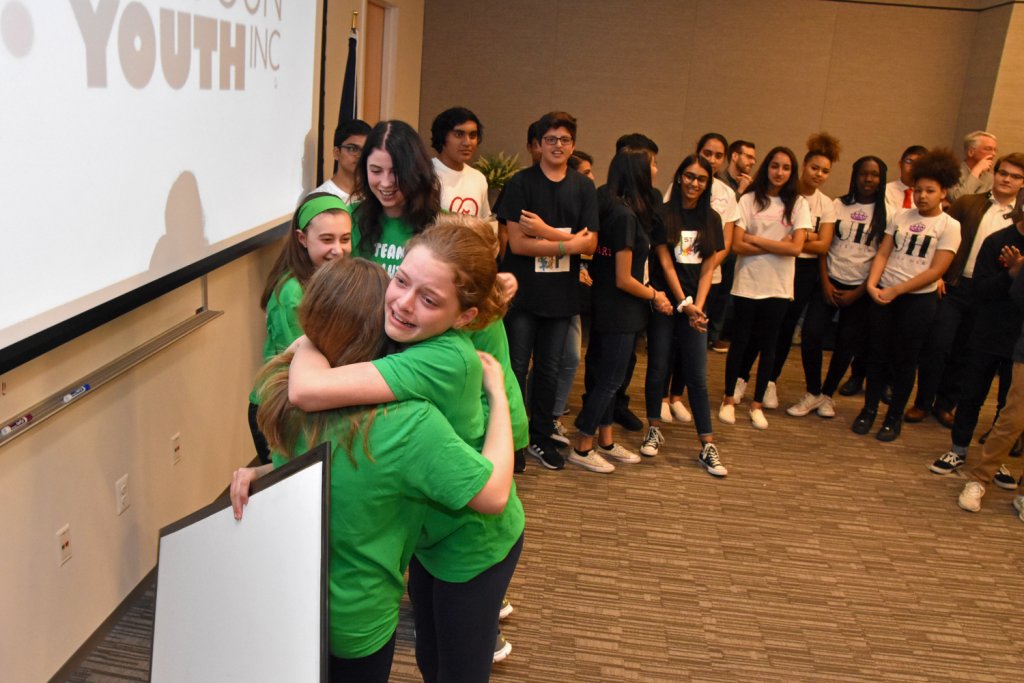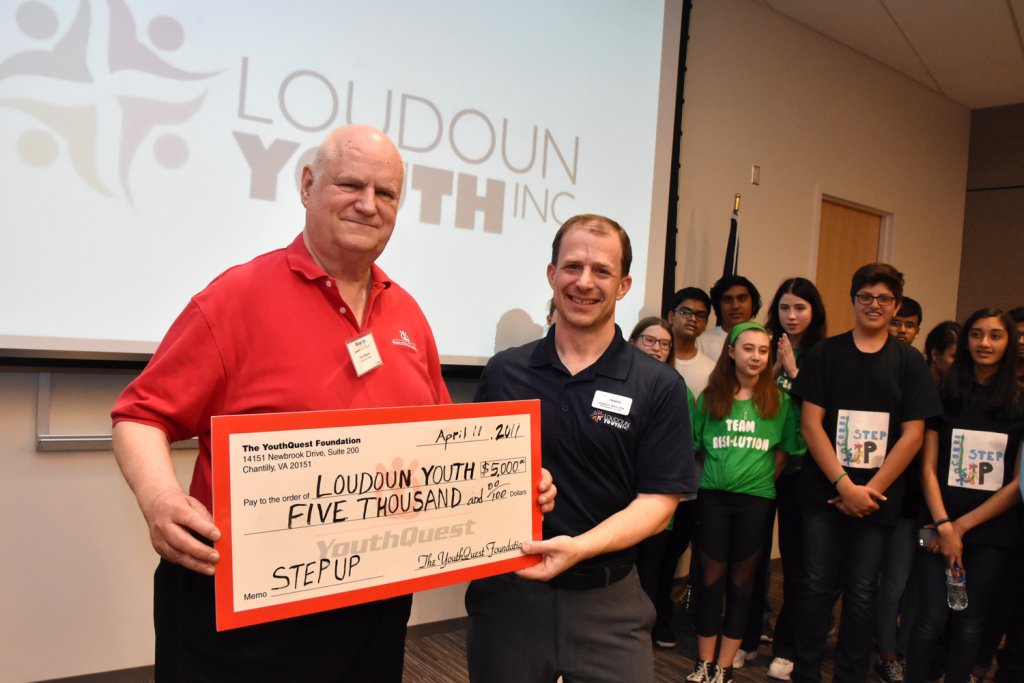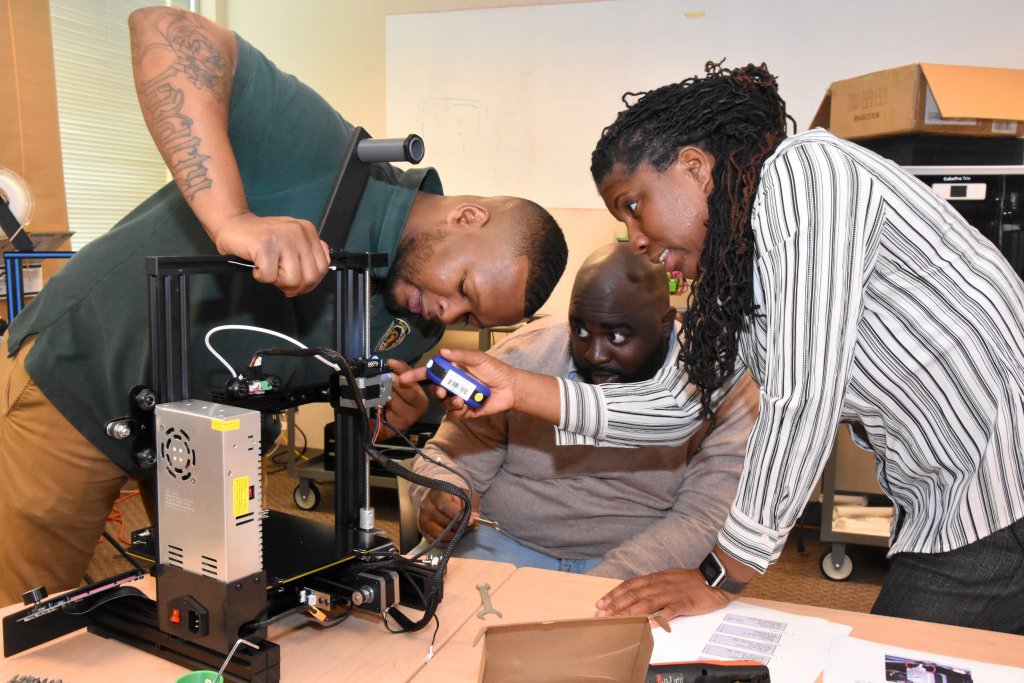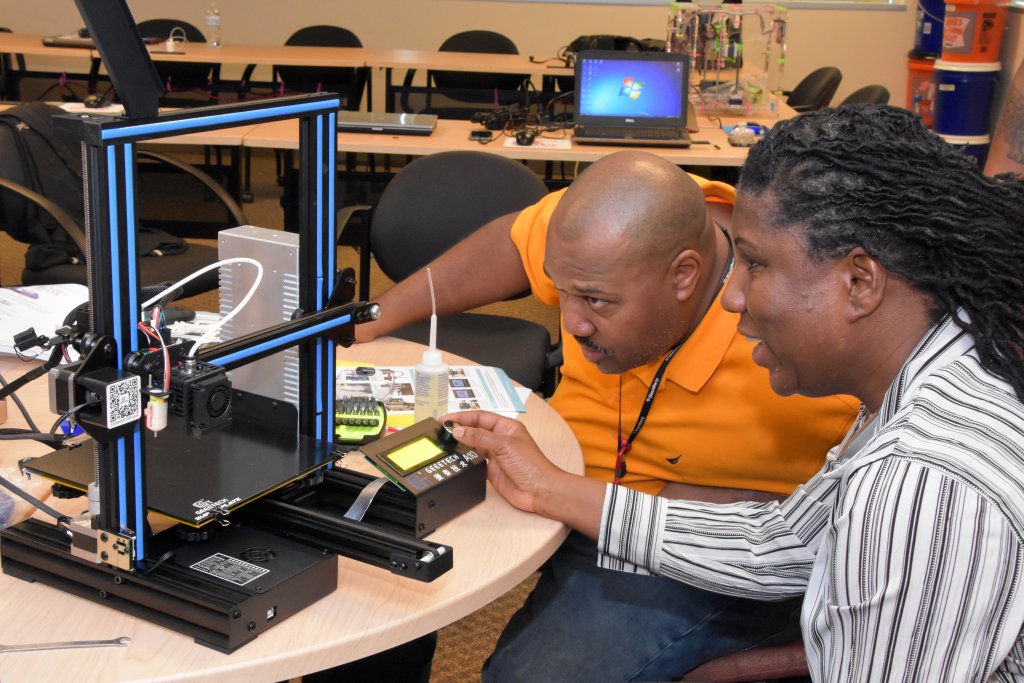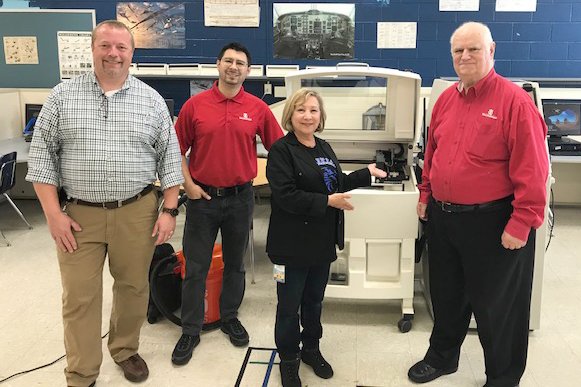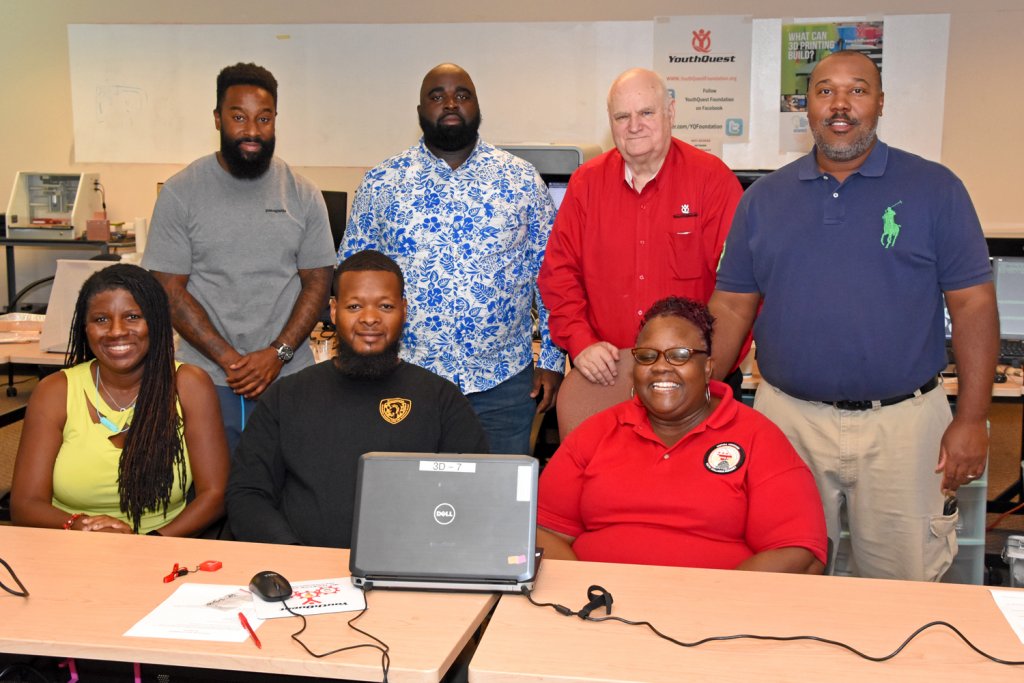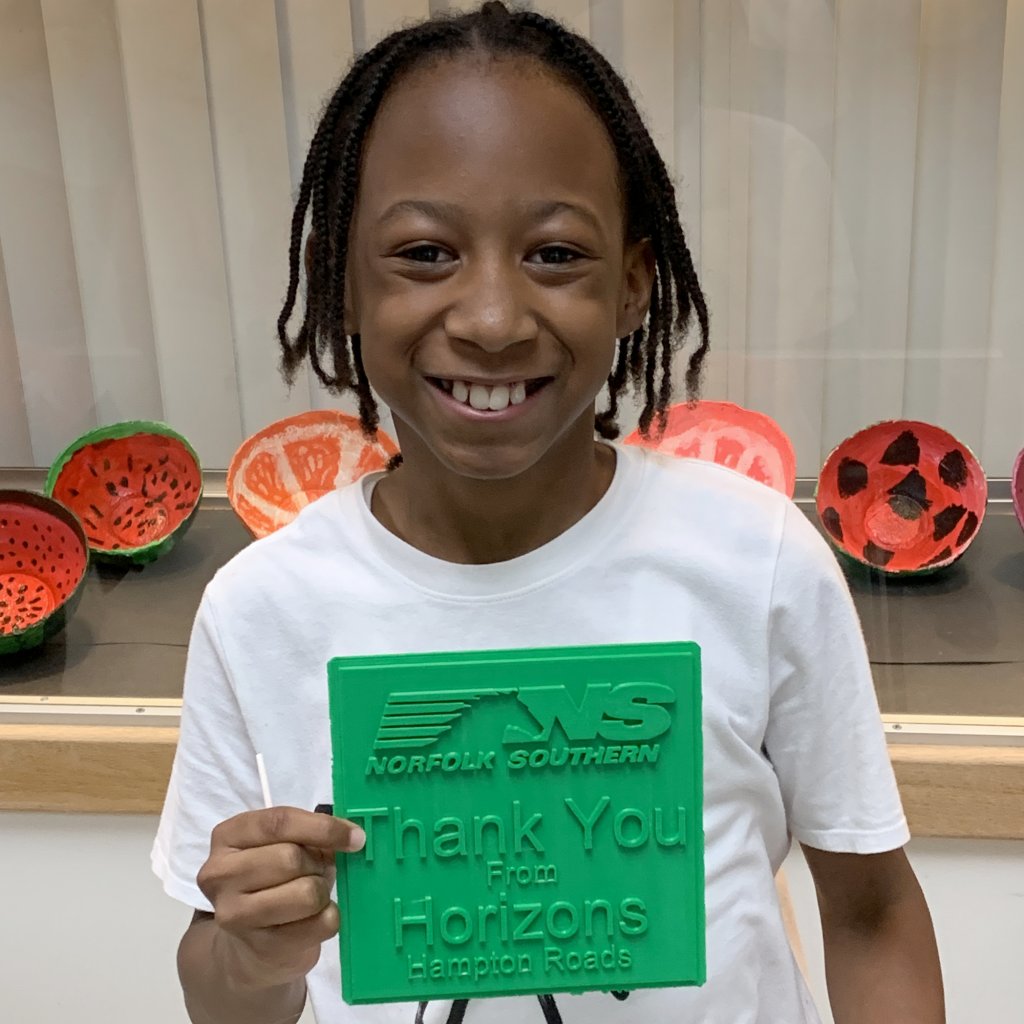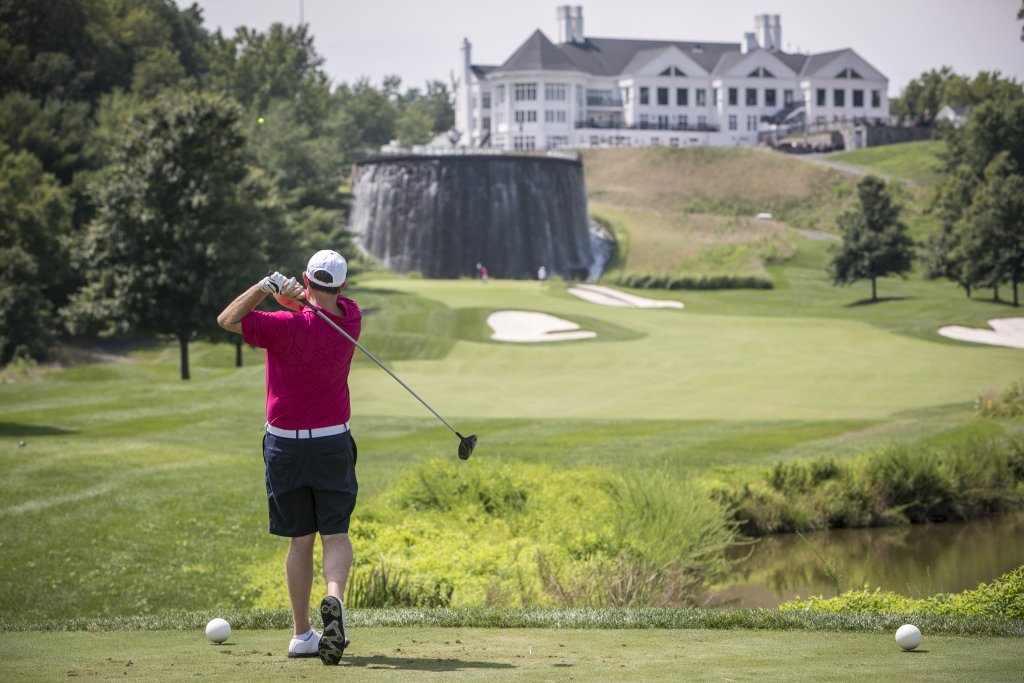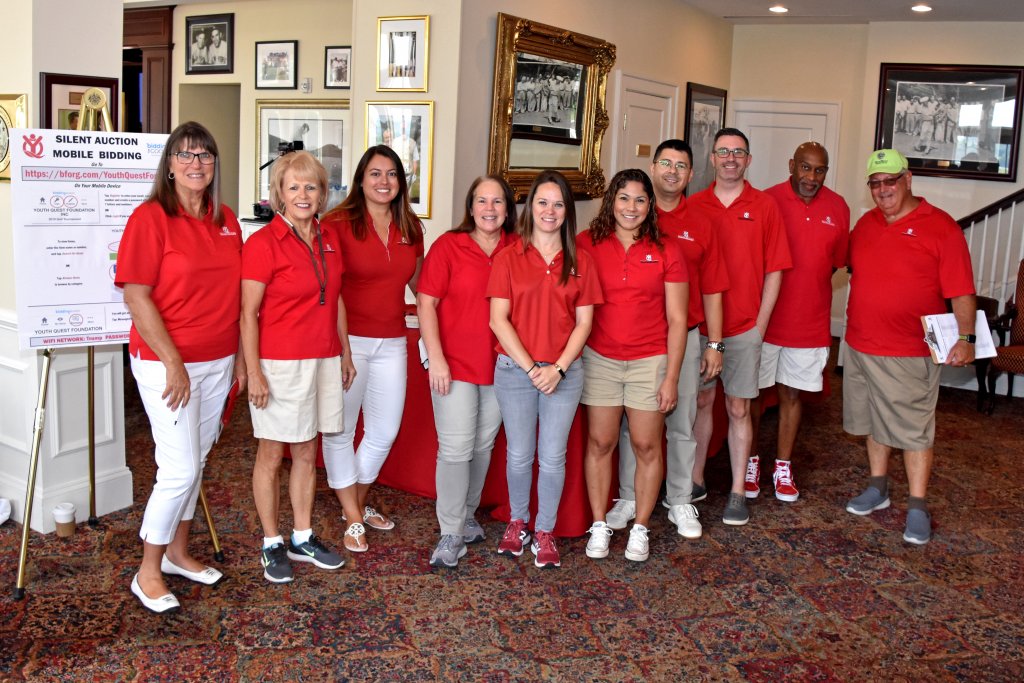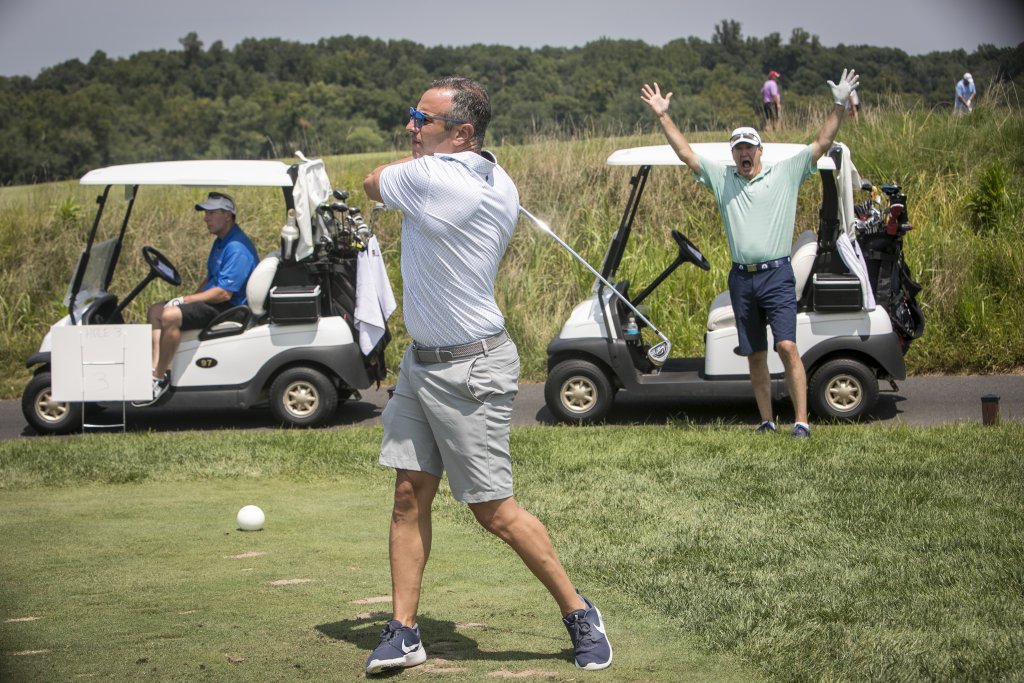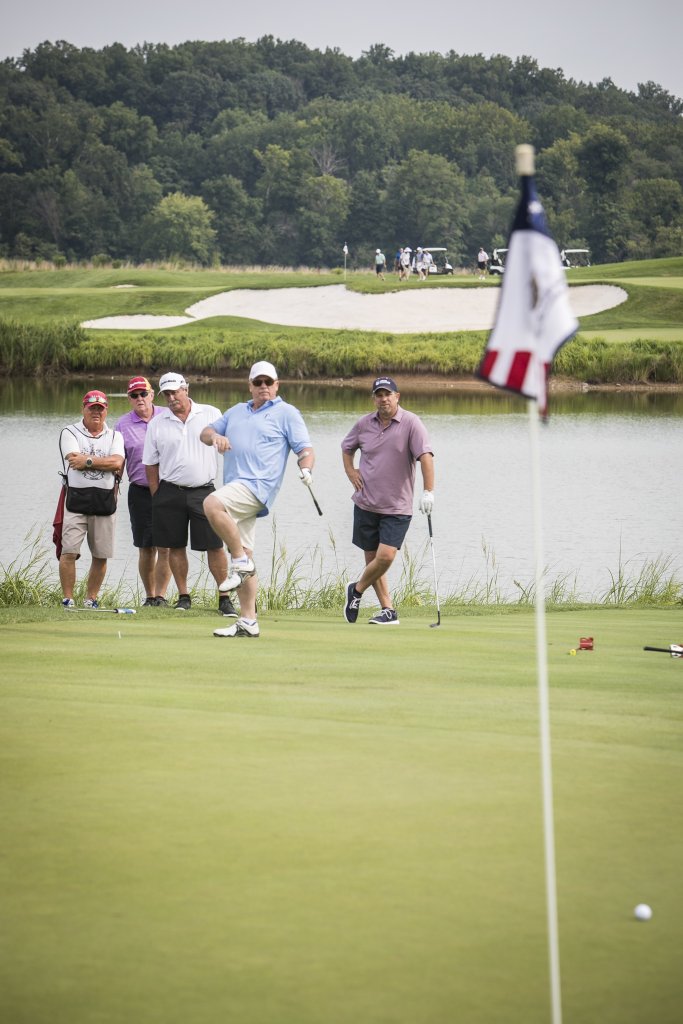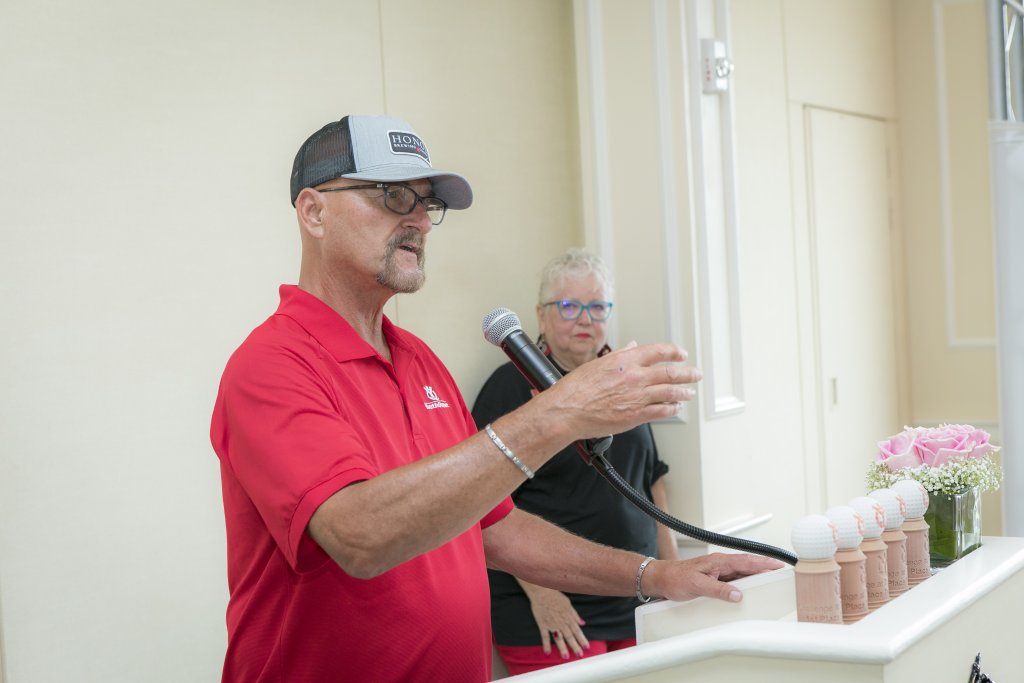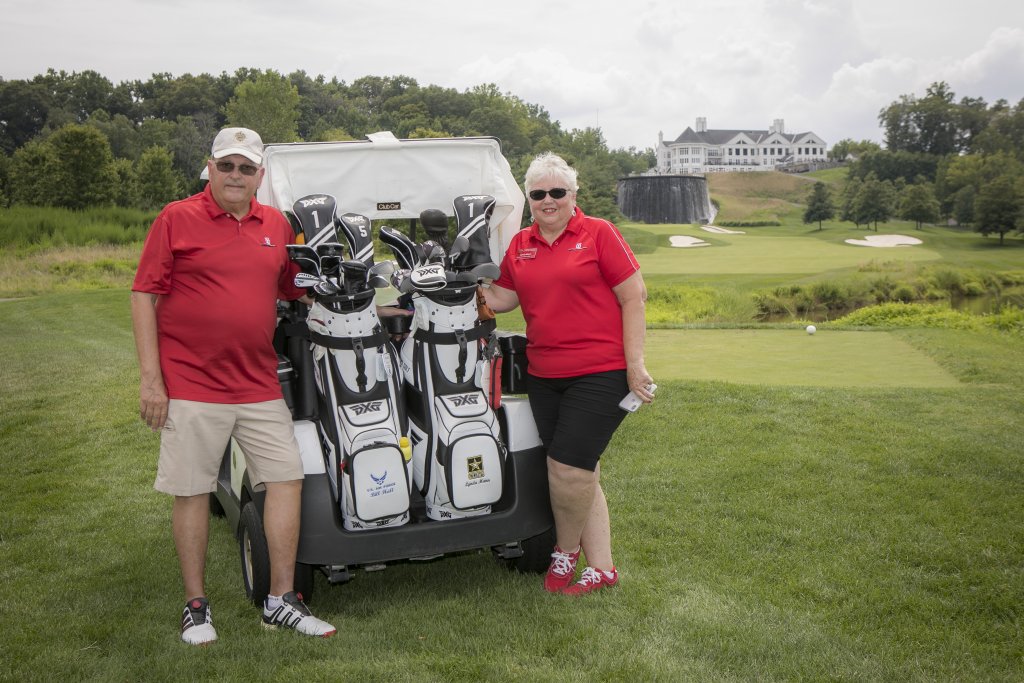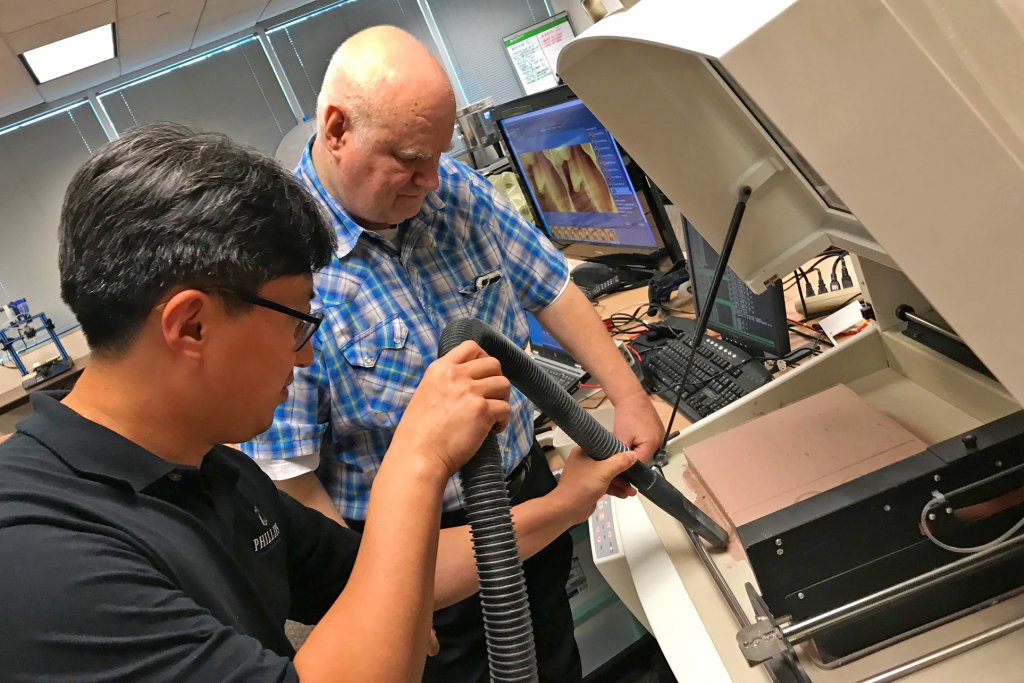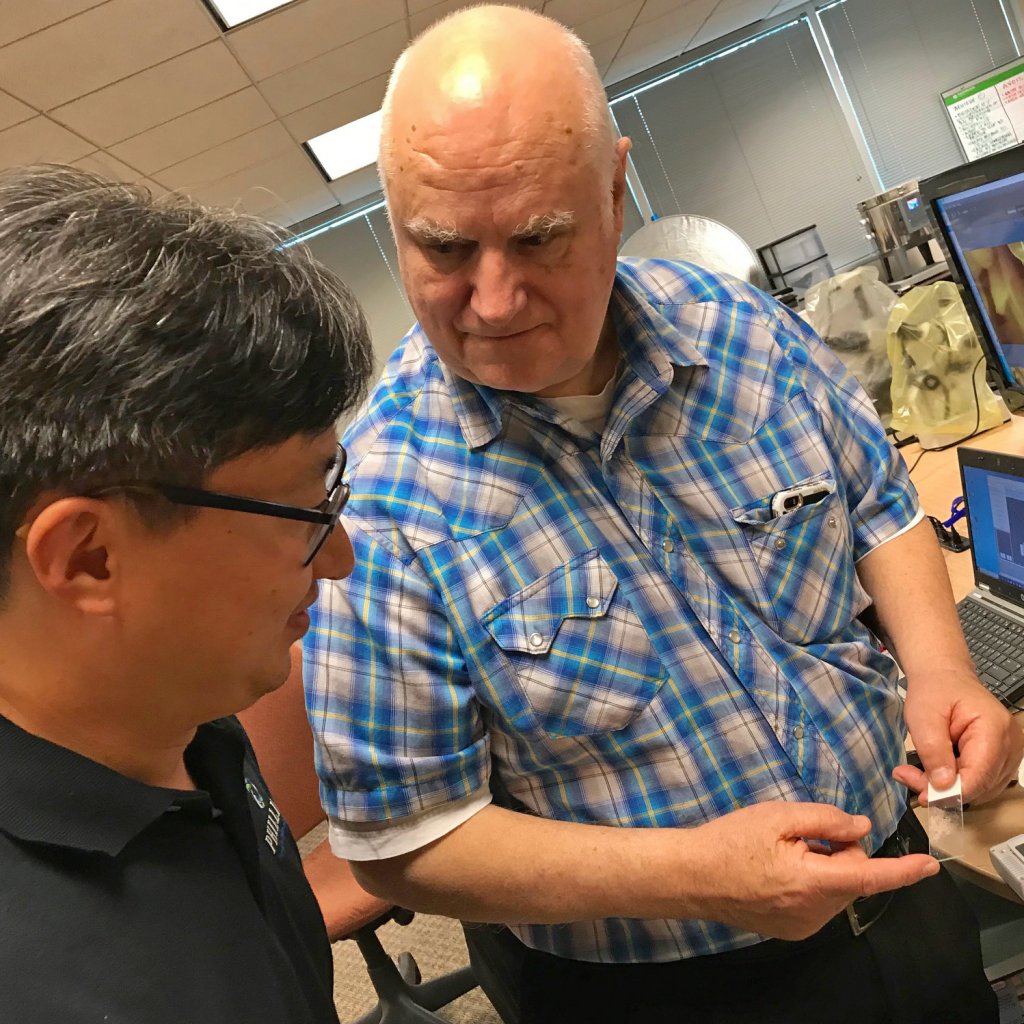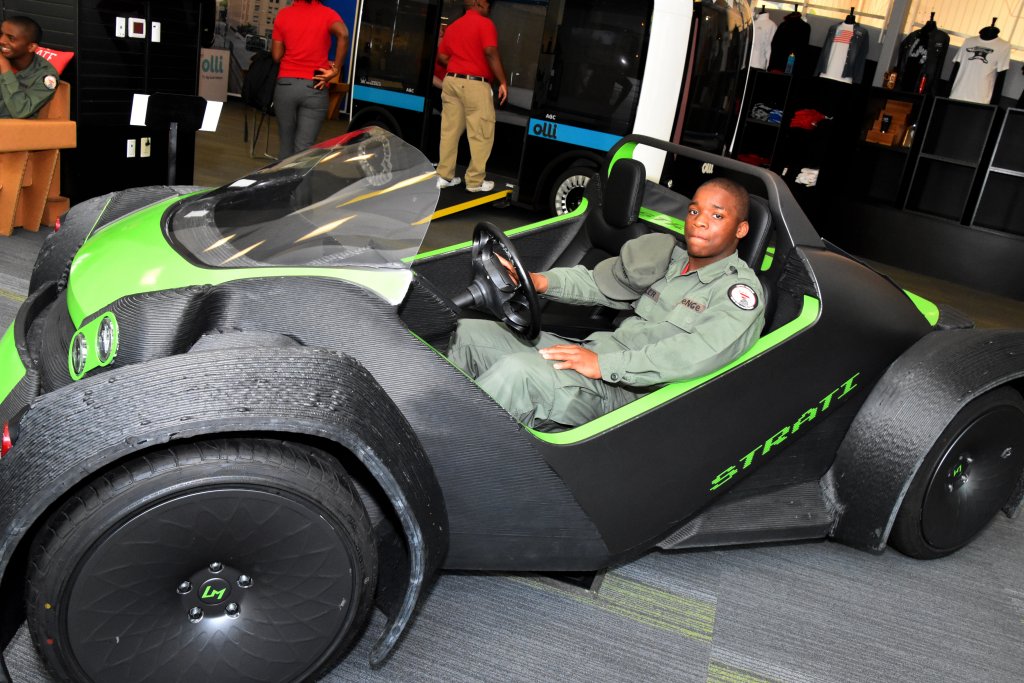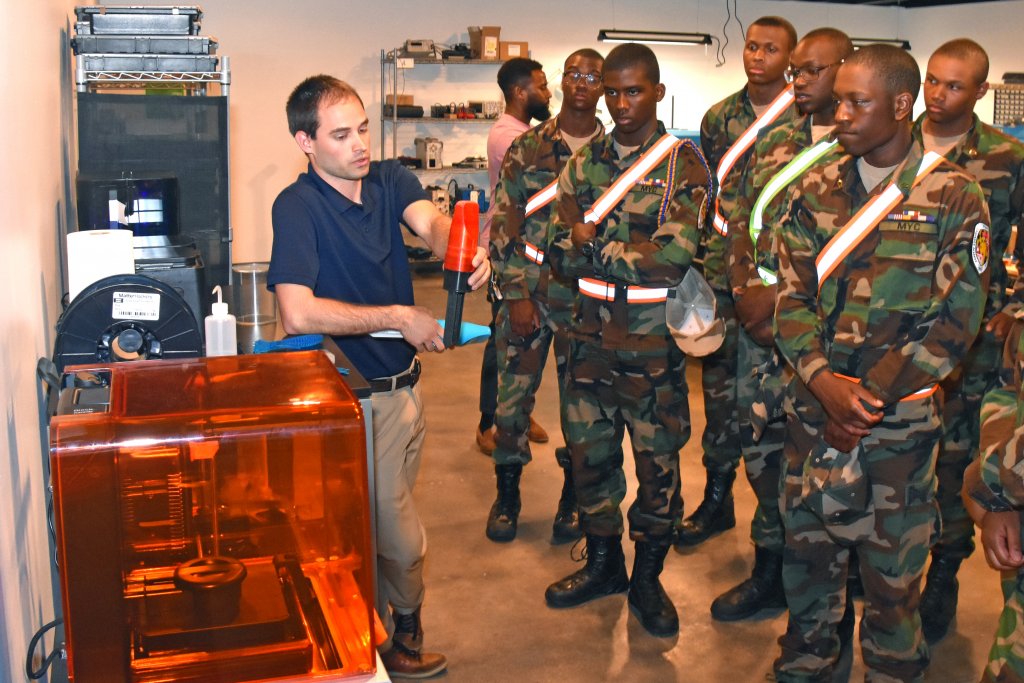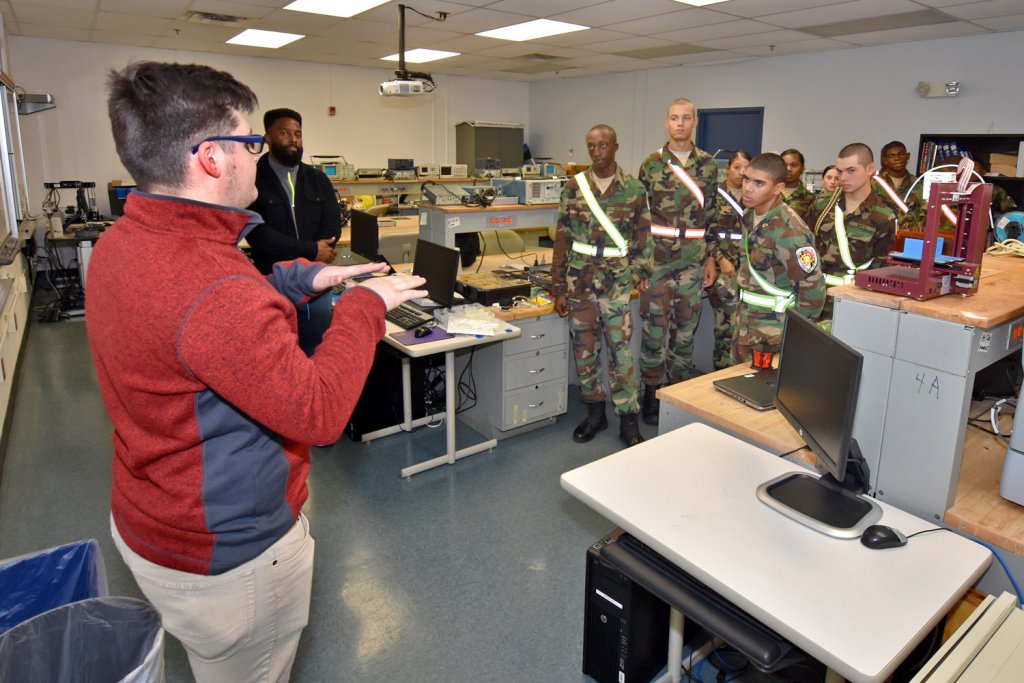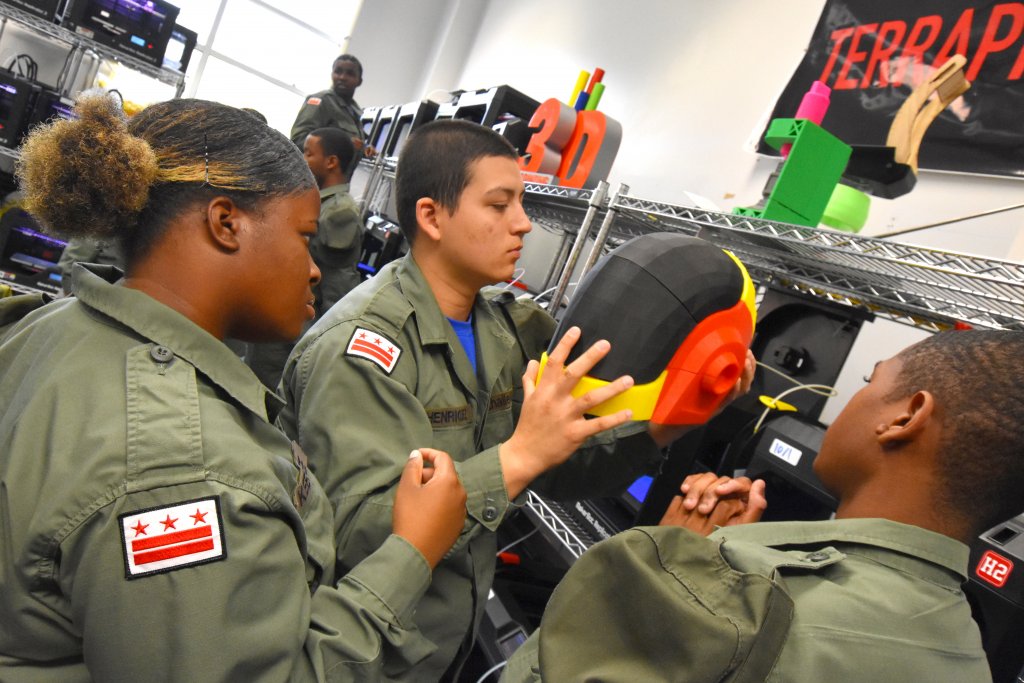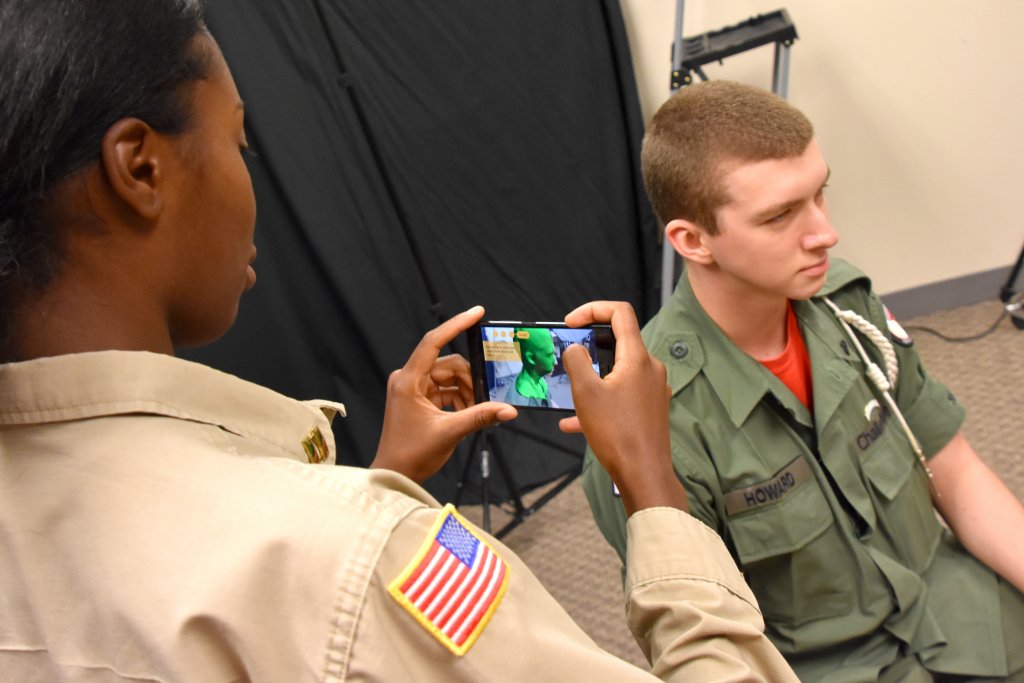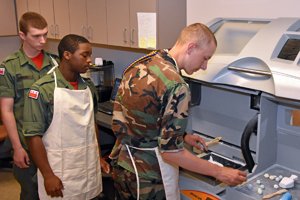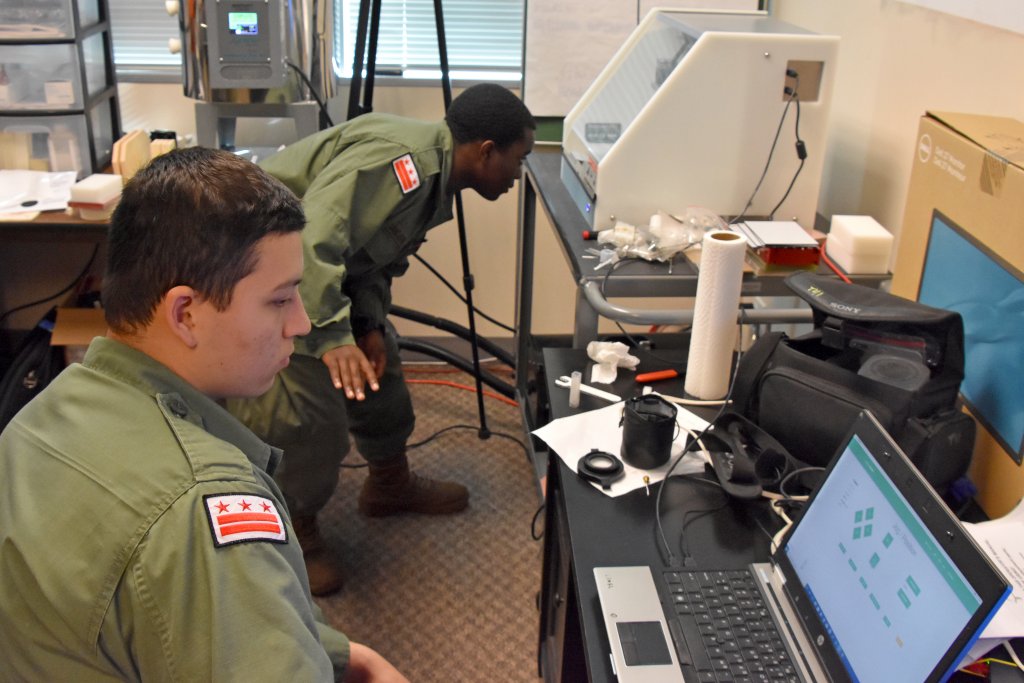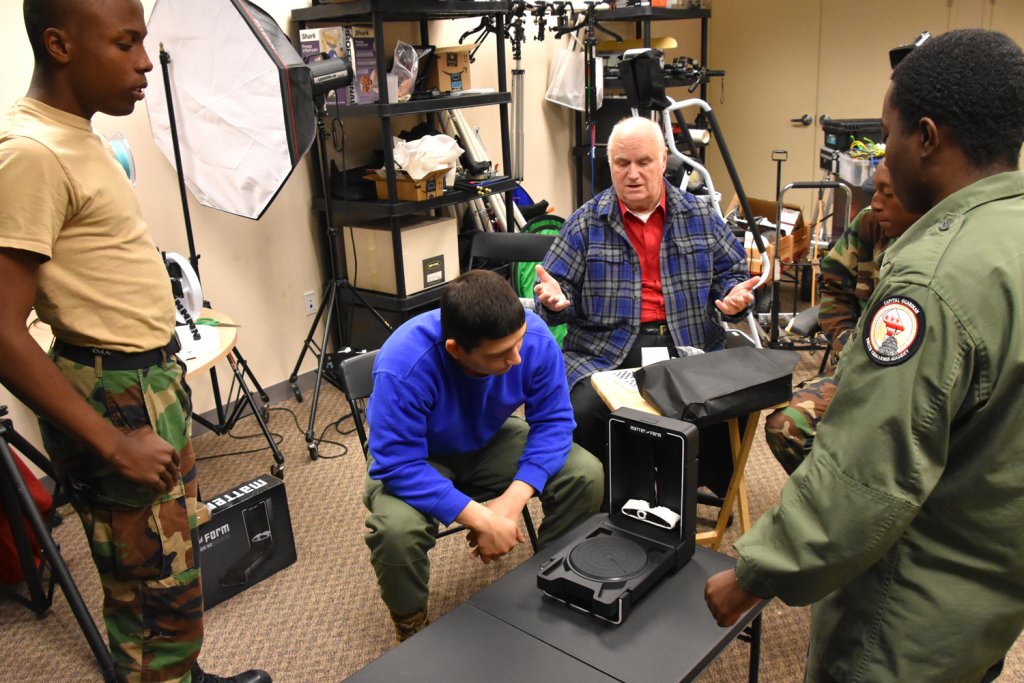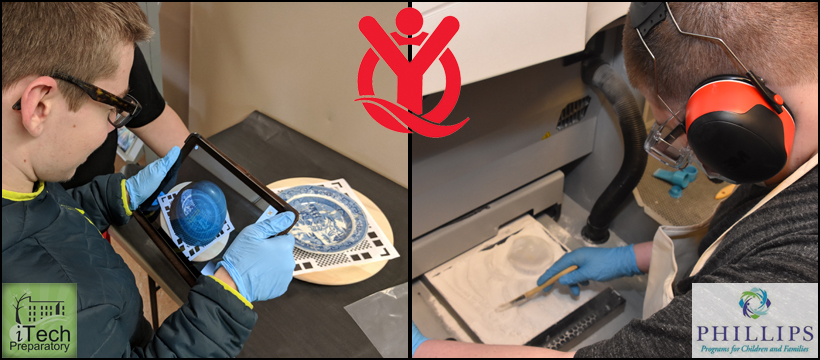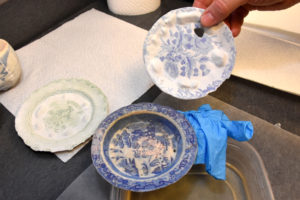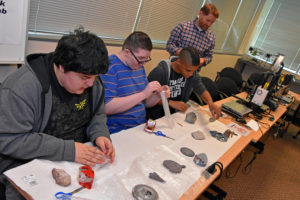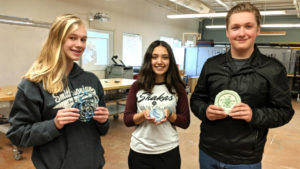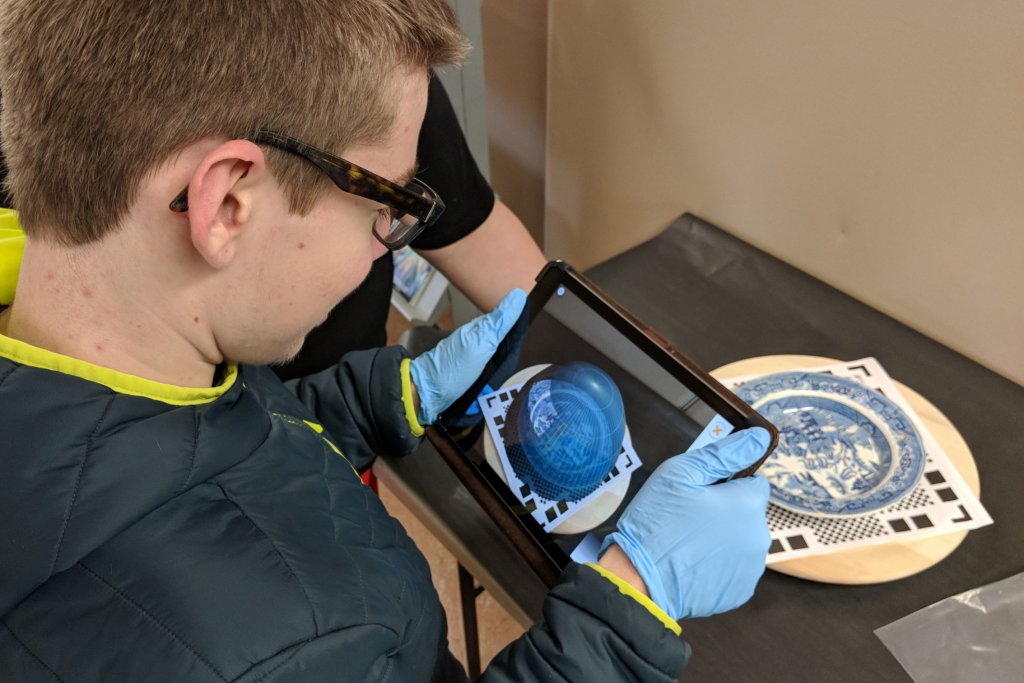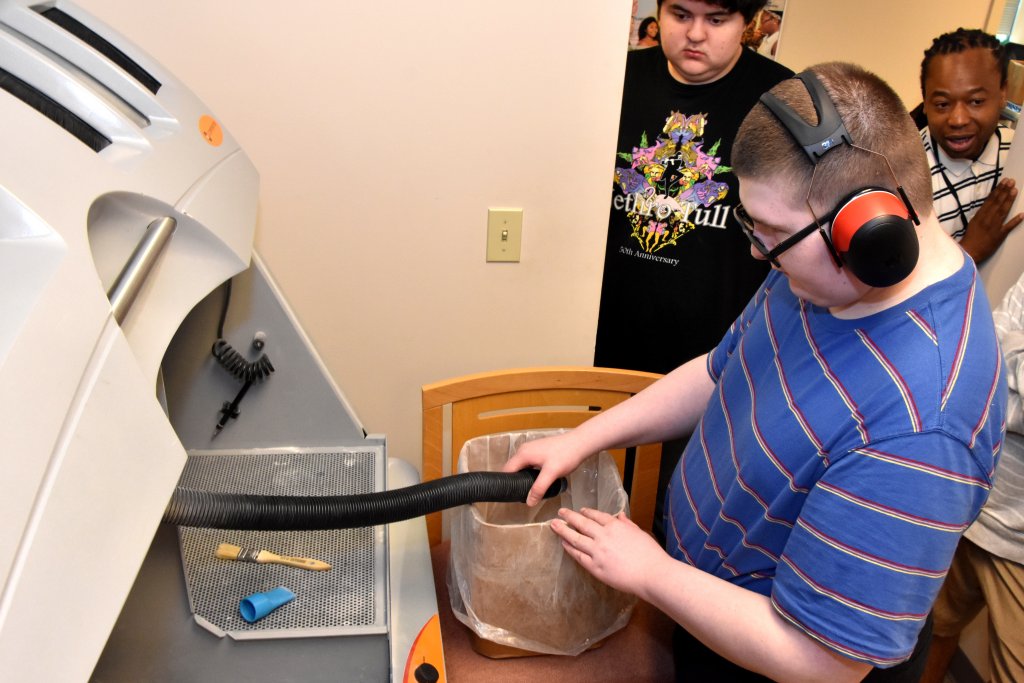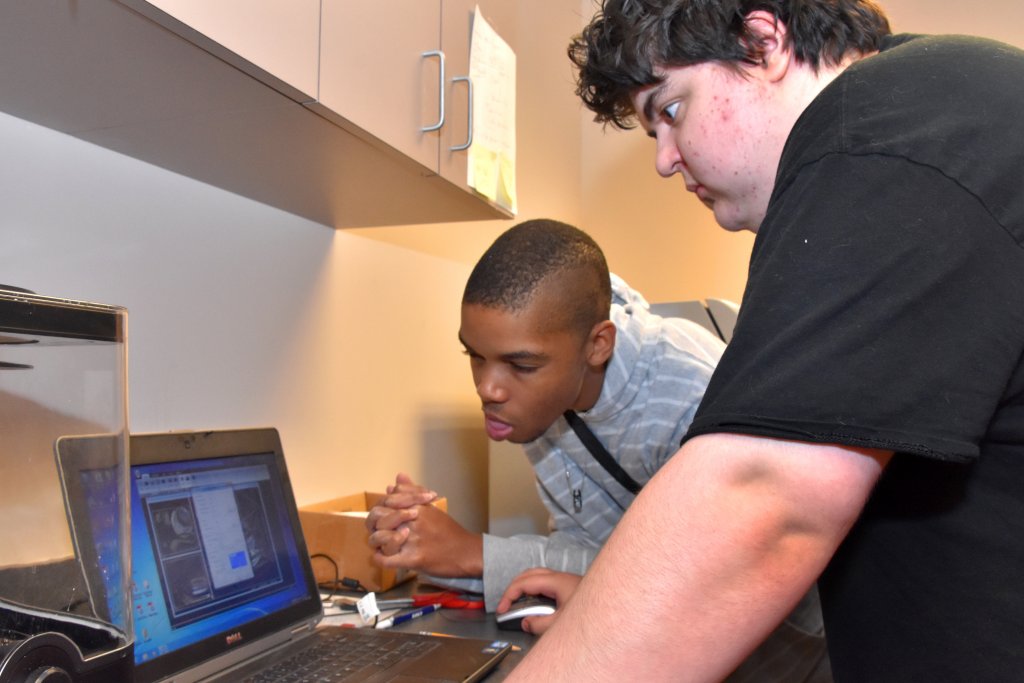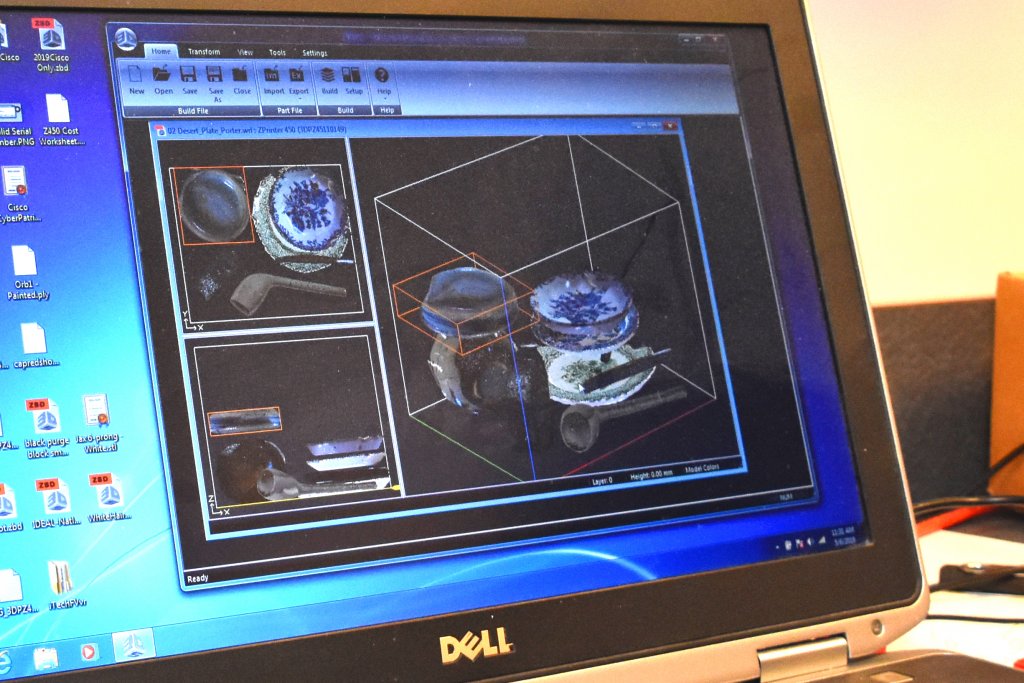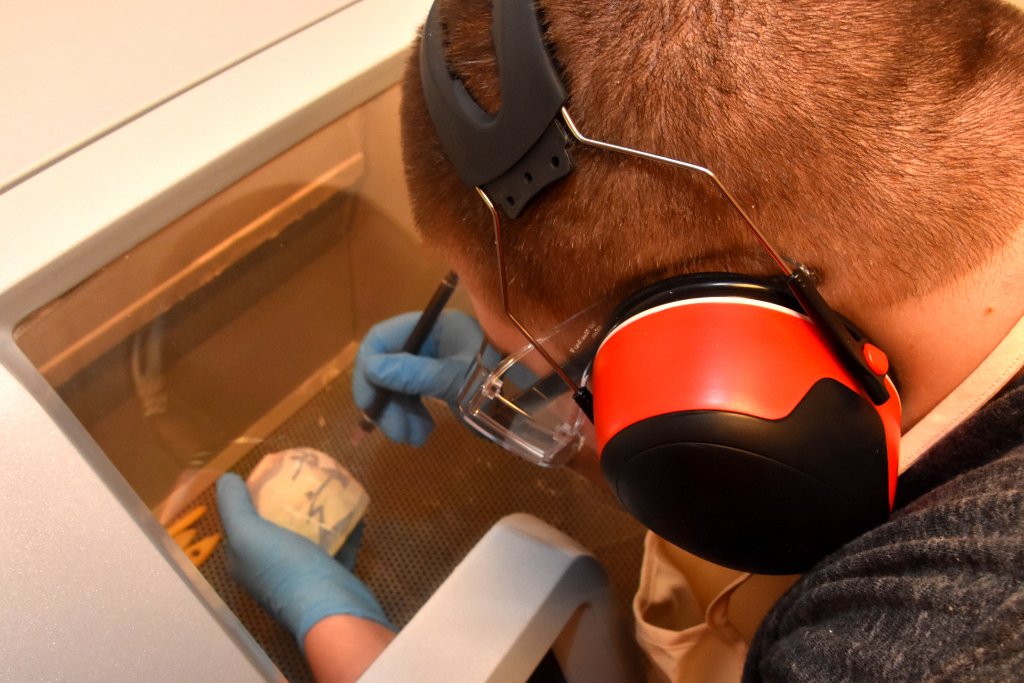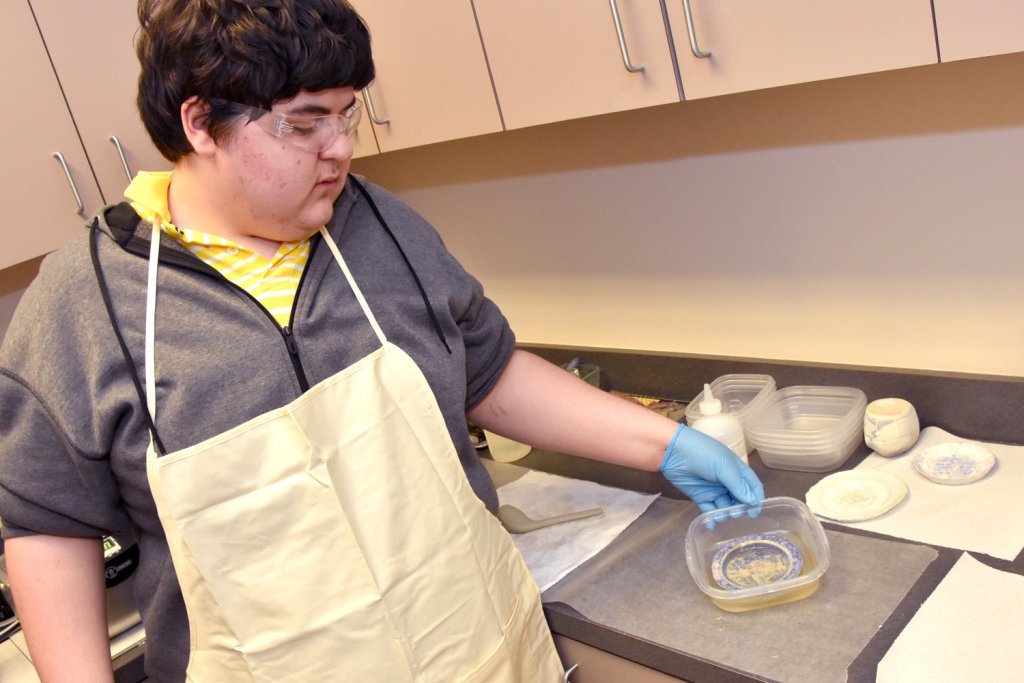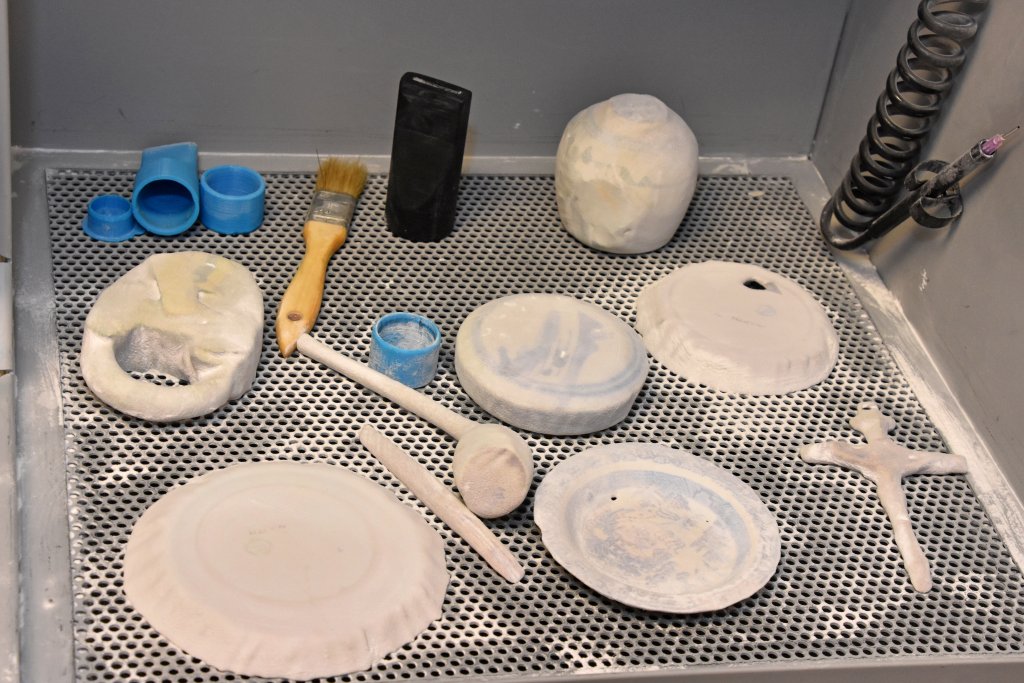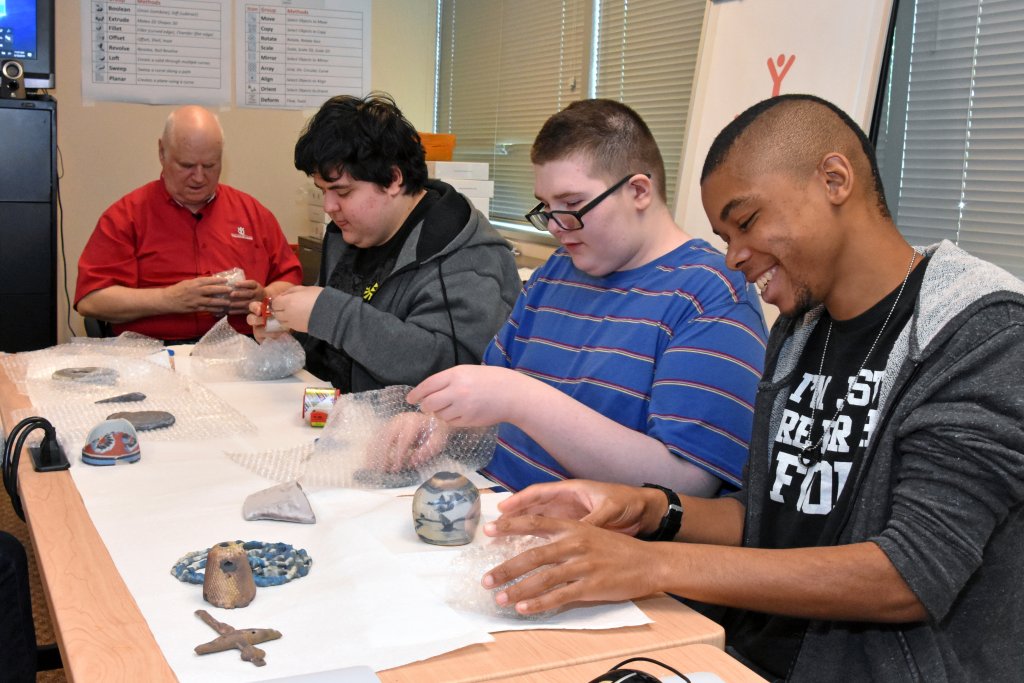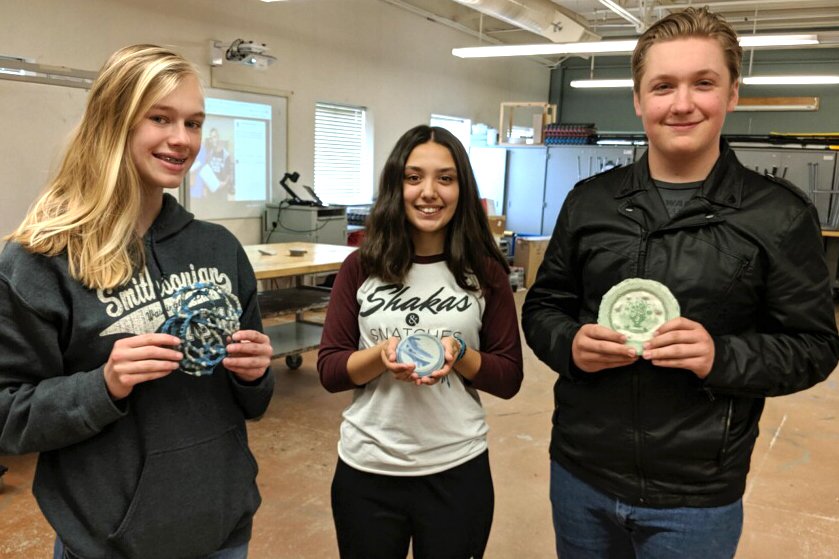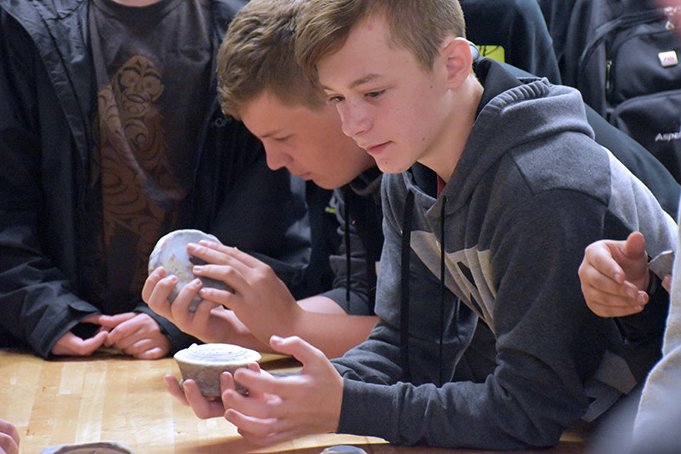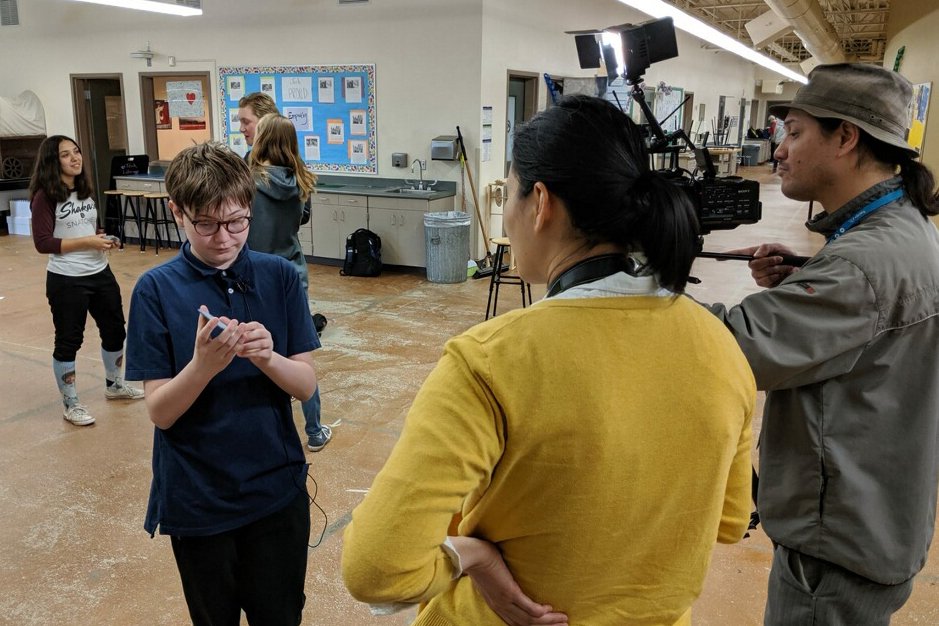Teachers are at the heart of our mission to change the lives of at-risk youth. That’s why, as we roll the closing credits for 2019, our 3D ThinkLink instructors top the list of people who played starring roles for the YouthQuest Foundation this year.
Thanks to the teachers we trained at National Guard Youth ChalleNGe Programs serving Maryland, South Carolina and the District of Columbia, 57 more cadets completed our 3D ThinkLink class this year. That brings the total number of Youth ChalleNGe cadets we’ve reached to more than 300 since 2013, when we began using 3D printing as a vehicle to teach underserved teens job skills and life skills.
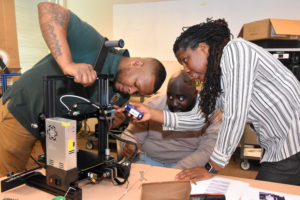
This year’s instructors were: Germaine Rasberry and Demyond Wright from South Carolina Youth ChalleNGe Academy; Jamarr Dennis and Aaron Ancrum from Maryland’s Freestate ChalleNGe Academy; Keith Hammond and La-Toya Hamilton from DC’s Capital Guardian Youth ChalleNGe Academy.
In addition to carrying out many other responsibilities at their schools, these teachers devoted time to conduct classes and print students’ projects, organize 3D-printing community service projects, and transport their cadets to Vocational Orientation field trips. They also traveled to our lab in Chantilly Virginia, in February and September to sharpen their skills at teacher training sessions. In June and November, they returned with top students selected for Advanced Training, which provided hands-on learning experiences to prepare the cadets for continued education and careers in 3D printing.
PHILLIPS Schools
As with the ChalleNGe programs, workforce development became a new priority this year in our partnership with the PHILLIPS Programs for Children and Families.
The PHILLIPS teachers we trained have used their 3D ThinkLink skills to tailor our curriculum for their students with autism spectrum disorder (ASD). These students often have great attention to detail, deep focus, tenacity, pattern recognition and outside-the-box thinking skills that help them excel at 3D design and printing.
YouthQuest Director of Instruction Tom Meeks is working closely with Sam Son, who oversees the 3D classes at PHILLIPS, to identify employment opportunities for young people with ASD.
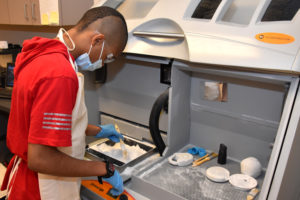
A highlight of the year was a project Tom organized to demonstrate how we can help teens on the autism spectrum develop skills to become independent, successful adults.
PHILLIPS teachers Jim Field and Joseph Phillips brought Henry, Ladrious and John, students from the Annandale and Fairfax, Virginia, campuses, to our lab in June to be part of a unique cross-country collaboration with kids at a STEM-focused magnet school in Vancouver, Washington.
Award-winning teacher John Zingale’s 7th and 8th graders at iTech Preparatory did 3D scanning of 19th-century artifacts from the Fort Vancouver National Historic Site to create an interactive virtual museum. But they had no way to make realistic, full-color replicas of the scanned artifacts that could be handled and studied without fear of damaging the originals. Tom arranged to have the PHILLIPS students use one of the powder/binder 3D printers in YouthQuest’s lab to create the reproductions for iTech.
Over the course of three days, Henry, Ladrious and John mastered every step of the process: taking in the 3D image files; preparing the files in the printing software; setting up and operating the printer; post-processing the printed objects; and packaging them for shipping to Vancouver.
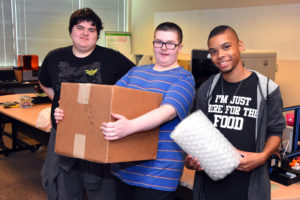
It was especially gratifying to have Henry involved in the iTech project. He was in our first 3D class at the PHILLIPS School in Annandale and attended a week of advanced training in our lab in 2017. Henry, who says he wants to be “a tech guru,” graduated from PHILLIPS in June.
The Mighty, a website that connects and empowers millions of people facing disabilities and health challenges, featured this article about the difference our program has made in Henry’s life.
The iTech project came full-circle when “Mr. Z” and some of his students visited our lab while they were in the DC area for the National History Day Contest. PHILLIPS Career Partners Director Lindsay Harris was there to let the students from Vancouver know how much the team from her school appreciated working with them.
Volunteers, Partners and Sponsors
In keeping with this year’s focus on teachers, it’s fitting that our Volunteer of the Year is a teacher.
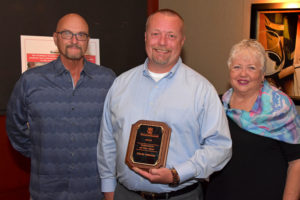
YouthQuest Co-Founders Lynda Mann and Allen Cage presented the award to Chris Adams, a Technology Education teacher at Franklin Middle School in Chantilly at our annual VIP Reception in August. Chris has been sharing his expertise with us for several years. This year, he facilitated the donation of two Z310 powder/binder 3D printers from Fairfax County Public Schools, our 2019 Community Partner Award winner. The professional-grade printers are vital to our job-training initiative.
Our 2019 Strategic Partner Award went to University of Maryland Terrapin Works in appreciation for hosting Vocational Orientation tours of the school’s 3D printing facilities and department of mechanical engineering for Capital Guardian cadets twice a year.
Harford Community College continues to be a valuable resource for our Freestate cadets, as David Antol provides tours of the school’s 3D printing lab. During a Vocational Orientation event in October, they got to meet Maxwell Herzing, a 2018 Freestate graduate who’s now one of Prof. Antol’s Engineering Technology students. Maxwell’s message to the cadets about the importance of doing something you love and not being afraid to make mistakes was right on the mark.
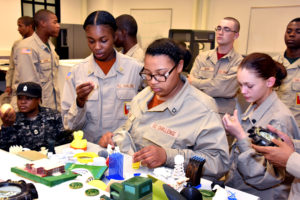
Dr. Jeff Raquet at the University of North Carolina-Charlotte Department of Mechanical Engineering and the 3D printing team at Duncan-Parnell in Charlotte provided valuable Vocational Orientation experiences for our 3D ThinkLink classes from South Carolina Youth ChalleNGe Academy.
All the success we’ve enjoyed this year would not be possible without the financial support of our sponsors. We were pleased to welcome DFS Construction Corporation and DCG Dominion Construction Group as first-time sponsors of our annual golf tournament in August, along with returning sponsors AOC Solutions, FEDAC, the Poole Foundation, the POH Group, Kipps DeSanto, Insperity, Gombos-Leyton, Jones Lang LaSalle, Old Dominion National Bank, CrossFit PR Star and Valley Forge Acquisition Corp.
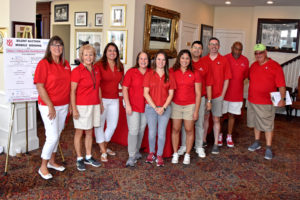
We’re also grateful to our golf tournament volunteers — Linda Ackerman, Emily Blake, Rachel Cage, Edna Davis, Nikki Gombos, Rob Hall, Val Hightower, Steve Levenson, Ingrid Louro and Tony Sanderson – along with the entire team at Trump National Golf Club, Washington DC.
Because of the contributions everyone has made to our mission this year, we’ve been able to help at-risk teens break the cycle of failure and get on course for success.
Three of this year’s students from SCYCA earned $1,000 scholarships for essays they wrote about what their 3D ThinkLink experience taught them.
“I believe that anybody and everybody can accomplish their goals in life. Why? Life is full lessons and blessings. That’s why I haven’t given up.” – Naomi Perez
“I want to show everyone at home and everyone who has ever doubted me I’m more than just the average teenager. I’m going to make something out of myself and I’m not going to go back to my old ways.” – Ka’Dejah Riley
“I can do anything … nothing is beyond my reach.” – Hunter Lusby
The Year in Photos
